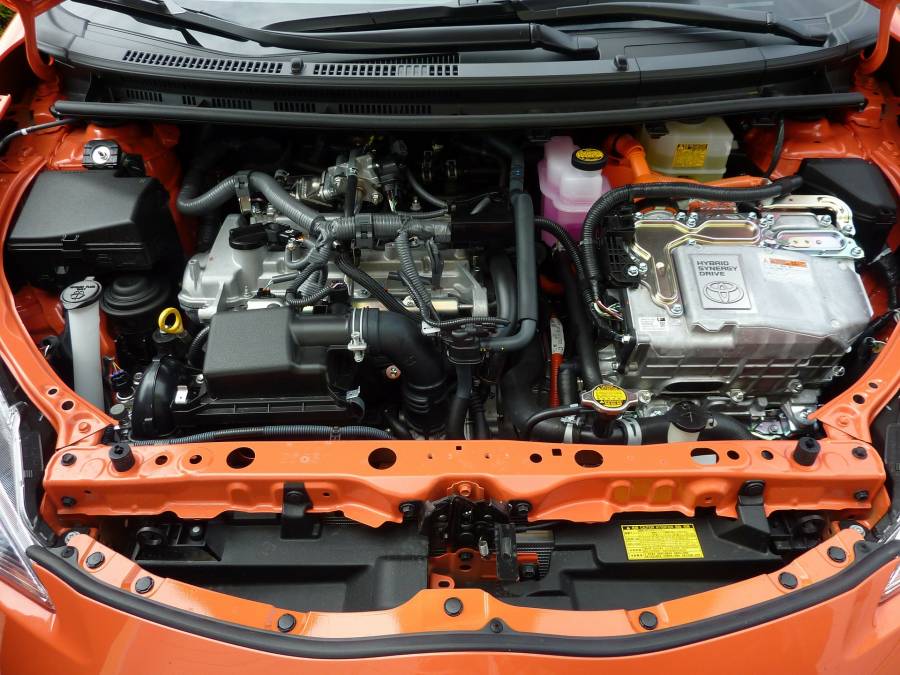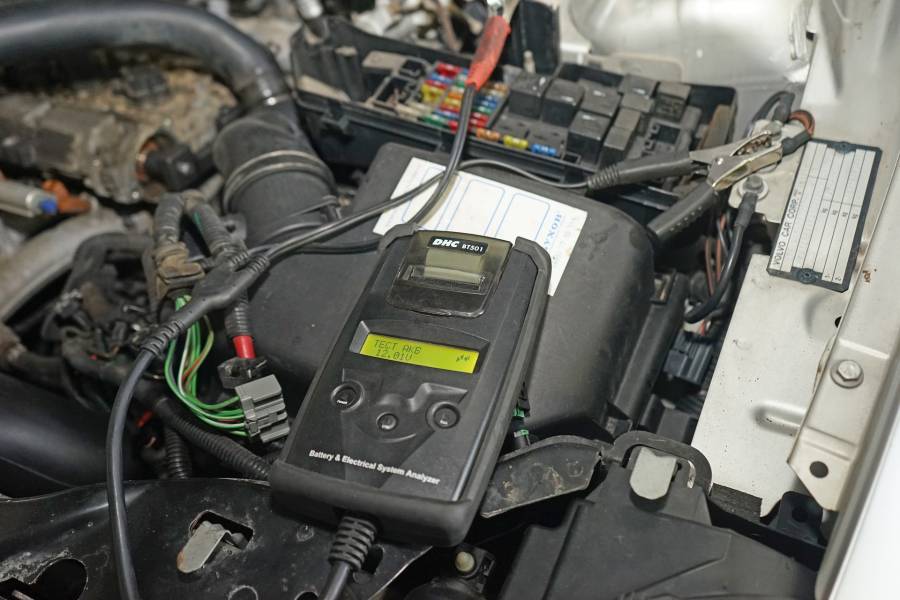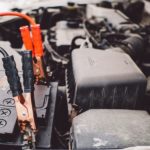Quick Navigation
Hybrid cars are now a popular way of saving money and protecting the environment, but they are not immune to problems.
One of these problems is the low cooling performance of the hybrid battery.
The hybrid battery is the secret behind the success of these cars. However, the operating temperature of such batteries needs to be controlled within a safe range.

Otherwise, the effectiveness and safety of the battery are at risk.
Under-performing hybrid batteries are one of the many problems that most hybrid owners encounter when driving their vehicles.
Such problems can be different and may need several solutions to solve them effectively.
Read on to learn about the causes and solutions of the low cooling performance in these batteries.
Causes And Solutions Of Low Cooling Performance Of The Hybrid Battery
The battery cooling system is a closed cooling circuit on the hybrid vehicle.
The cooling system works with an electric pump to circulate the coolant from the inverter to the transmission.
The system also has a radiator to dissipate heat from the coolant.
So, there are many reasons for the low Cooling Performance of the Hybrid Battery. Some may be repairable, and some may not. Some of these include:
Clogged Radiator
The cooling of the Hybrid Battery pack is carried out by a coolant that flows through the radiator.
If the radiator is clogged, the coolant will not flow properly, meaning that it cannot cool your battery as needed.
It will lead to your battery not performing at its best and even failing.
In some cases, the battery will overheat, causing damage to it or other parts of your vehicle.
Solution
To avoid this problem, keep up with your maintenance schedule and let a mechanic address any issues.
You can only tell if your radiator needs cleaning by checking the coolant level. There may be a leak somewhere in the system if it is low.
Extended Usage Of The Hybrid Battery
When you use a hybrid battery for a long time, the battery’s capacity drops significantly. As a result, the cooling performance of the hybrid battery also drops significantly.
When a hybrid battery pack is used for a long time, its failure starts in one or more cells within the pack.
A failed cell will draw excess current, causing an imbalance within the pack. It can lead to other cells overcharging or heating up.
Solution
Whatever the dealer told you, hybrid batteries don’t last a lifetime.
Most people who drive hybrids need a new battery at around 100,000 miles.
So, once you start clocking 90,000 miles, you should start thinking of replacing the battery as soon as you can.
Extreme Temperatures
Hybrid systems rely on liquid cooling to keep their batteries operating at an optimal temperature.
It takes more energy to maintain the optimal temperature for a smooth operation when very hot or cold weather.
In cold weather, the cells shrink and become more susceptible to damage from vibration and other impacts.
Heat makes them expand and puts stress on the seals between cells. As a result, the stress can lead to leakage or short-circuiting that can permanently damage the pack.
Solution
To avoid extreme temperatures effects in hybrid batteries, use a battery thermal management system.
The battery thermal management system can help the battery keep the cool temperature and reduce the heat from the battery.
Leaks In The Coolant Reservoir Tank
Over time, leaks can develop in the coolant reservoir tank due to corrosion or physical damage.
The damage may start as cracks or holes on the tank from road debris thrown up by passing traffic.
It can lead to air being drawn into the cooling system and reduce its performance. It ends up causing overheating of your hybrid battery pack and engine.

Solution
To ensure your hybrid battery maintains maximum reliability, you must promptly fix leaks in the coolant reservoir tank. Leaks can be anywhere in the system.
They can be from radiator hoses, heater hoses, water pumps, or even from one of the numerous cooling system connections.
If left unfixed, a leaking overflow tank will eventually drain its contents. The leak will leave you with no coolant in your system and an overheating engine and battery.
Short Circuit
There are two ways you can get a short circuit. The first is an internal fault — if you have a manufacturing defect or physical damage to the cell.
The damage can cause the insulation to fail and allow current to flow between cells in parallel. It cuts down on your capacity and heats the cell causing thermal runaway.
The other way you can get a short circuit is by disassembling your battery and touching metal parts together.
It can be as simple as taking out your battery pack and dropping it on concrete or another hard surface.
It could result in a broken internal connection or damage an insulator.
Solution
The solution for the short circuit is to prevent the formation of a short circuit in the battery.
Adding a separator can prevent the positive and negative electrodes from coming into contact.
It is also essential to let professional personnel handle any problems in your car.
Incorrect Charger Usage
When you plug your vehicle into an incompatible charging system outlet, it causes an imbalanced voltage supply.
The unbalanced supply directly affects your hybrid car’s battery pack causing underperformance in its cooling system.
Solution
It is important to note that too much current can cause overheating and performance issues to the battery.
It is recommended to be used only when the battery is low or completely out of charge.
Other things to note when charging your vehicle:
- Never charge your hybrid vehicle inside a closed garage or other space with limited airflow and ventilation.
- If you are using an adjustable charging rate charger, make sure it is set at a lower rate.
- Try not to leave the vehicle plugged in for more than 8 hours.
- Avoid direct sunlight and excessive heat as much as possible when charging your hybrid electric vehicle.
What To Do If You Can’t Fix A Low Hybrid Car Battery Situation
If none of the above fixes works, you may have to replace the hybrid car battery with a new one. It will improve the battery performance instantly.
In addition, it will save you money in the end by preventing other battery malfunctioning problems from arising.
However, this is not always the best solution because replacing the hybrid battery may not be the most cost-effective option.
Another option is to purchase a spare hybrid battery that you can use while charging your older one.
These batteries are available online at affordable prices and are often much cheaper than purchasing them at a local dealership.
The third option is to sell the old hybrid vehicle and buy another model that uses an alternate fuel. You can also use an electric motor instead of gasoline or diesel fuel.
Low Cooling Performance Of The Hybrid Battery – Conclusion
Hybrid batteries are sealed cooling systems that require very little long-term maintenance.
When in storage, hybrid batteries can become susceptible to damage due to temperature fluctuations.
One of the best ways to avoid hybrid battery issues is by having a proper hybrid battery cooling system.

Patrick started his love affair with cars in his childhood. Over the years, he claims a sturdy hold on his driving skills, along with a thorough understanding of cars. We can expect some interesting, holistic, and pleasurable blogs with his flair for writing and his love for cars.
Being a car enthusiast, Patrick has experience comprising of two decades in which he has ridden some of the meanest and strongest machines in the automotive industry. His previous avatars include an automotive professional, photographer, and journalist, and you will certainly experience the roundness of experience in his piece on this site.
In his second decade of reviewing cars and analyzing tools, Patrick is all set to give you convincing, reliable, and the latest information regarding what’s happening in the automotive industry. Currently, he owns a BMW Z3 but cannot get his eyes off Aston Martin DB5. He is a car enthusiast; he loves cooking and listening to music, especially jazz. Here are some of the pieces written by our ace author.



![BMW Emergency Call Battery Replacement [Explained] BMW Emergency Call Battery Replacement [Explained]](https://carsupercare.com/wp-content/uploads/2023/01/BMW-Emergency-Call-Battery-Replacement–-All-You-Need-to-Know-150x150.jpg)


